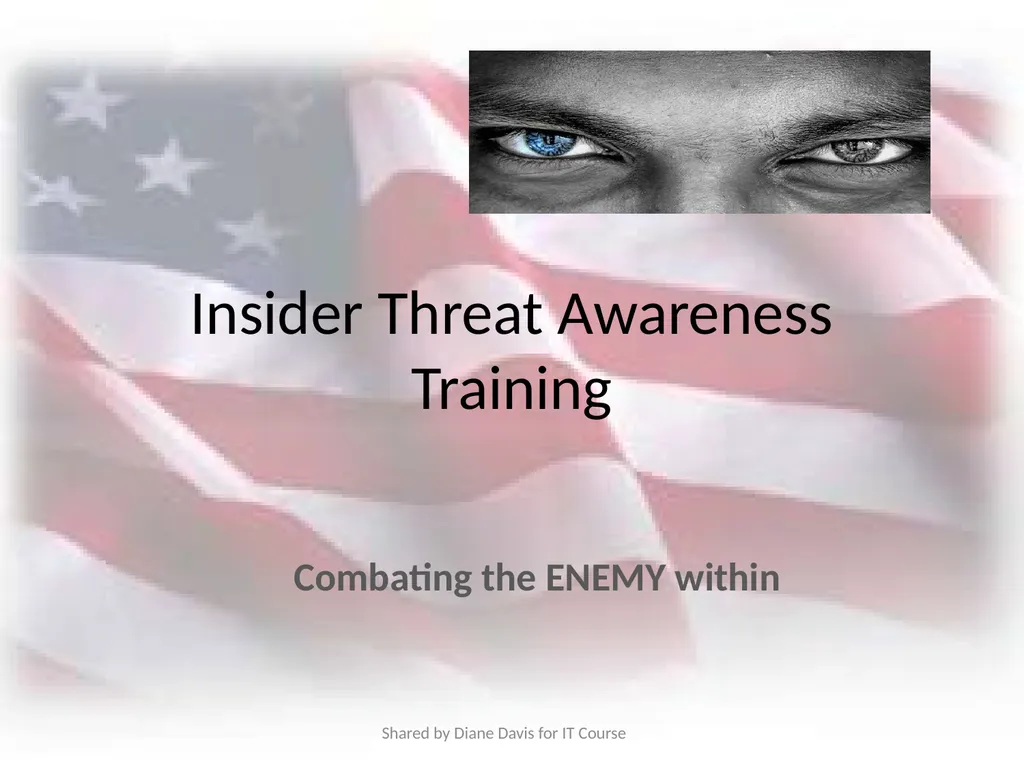Insider Threat Awareness Training Combating the
Author : aaron | Published Date : 2025-11-08
Description: Insider Threat Awareness Training Combating the ENEMY within Shared by Diane Davis for IT Course Why is the INSIDER THREAT significant An insider can have a negative impact on national security and industry resulting in Loss or compromise
Presentation Embed Code
Download Presentation
Download
Presentation The PPT/PDF document
"Insider Threat Awareness Training Combating the" is the property of its rightful owner.
Permission is granted to download and print the materials on this website for personal, non-commercial use only,
and to display it on your personal computer provided you do not modify the materials and that you retain all
copyright notices contained in the materials. By downloading content from our website, you accept the terms of
this agreement.
Transcript:Insider Threat Awareness Training Combating the:
Insider Threat Awareness Training Combating the ENEMY within Shared by Diane Davis for IT Course Why is the INSIDER THREAT significant? An insider can have a negative impact on national security and industry resulting in: Loss or compromise of classified, export-controlled, or proprietary information Weapons systems cloned, destroyed, or countered Loss of technological superiority Economic loss Loss of life Shared by Diane Davis for IT Course What is an INSIDER THREAT? It is a sad reality, but the United States has been betrayed by people holding positions of trust. Arguably, “insiders” have caused more damage than trained, foreign professional intelligence officers working on behalf of their respective governments. This information is intended to help contractors within the National Industrial Security Program recognize possible indications of espionage being committed by persons entrusted to protect this nation’s secrets. Not every suspicious circumstance or behavior represents a spy in our midst, but every situation needs to be examined to determine whether our nation’s secrets are at risk. Shared by Diane Davis for IT Course How Can I Recognize a Spy? Shared by Diane Davis for IT Course Characteristics of Spies 93% of the spies were men 20 – 29 years old was the most common age range for the beginning of an espionage career Civilians age 40 or over Military personnel in their 20’s 84% of spies were white, 6% black, 5% Hispanic & 5% other 57% were married, 33% Single, and 10% Separated or divorced 15% held a TS/SCI , 35% TS , 21% Secret, 3% Confidential, and 26% had no clearance at all 83% of the spies were born in the U.S. 64% volunteered their espionage services, 15% were recruited by a friend or family member, and only 22% were approached by a foreign Intelligence service 71% of military personnel volunteered to spy versus 57% of civilians who volunteered 69% were motivated by money, 27% were motivated due to revenge toward a current or former employer, 22% motivated by ideology, 12% sought the excitement of the spy lifestyle, and 4% by a compelling need to feel important Shared by Diane Davis for IT Course These statistics were gathered from the Espionage Database Project, an unclassified database maintained by the Defense Personnel Security Research Center (PERSEREC) for stored information on 150 cases going back to 1940 up through 2013. Counterintelligence Indicators Reportable Behavioral Indicators Disgruntlement with one’s employer or the U.S. Government













